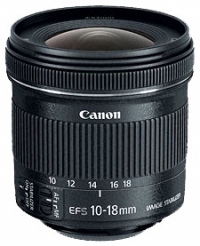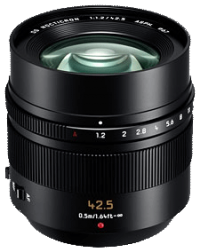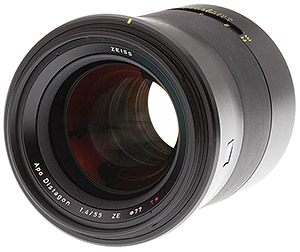Lenses of the Year: Best Zoom & Prime Lenses of 2014
posted Monday, December 22, 2014 at 5:00 PM EDT
The Imaging Resource Lenses of the Year Award
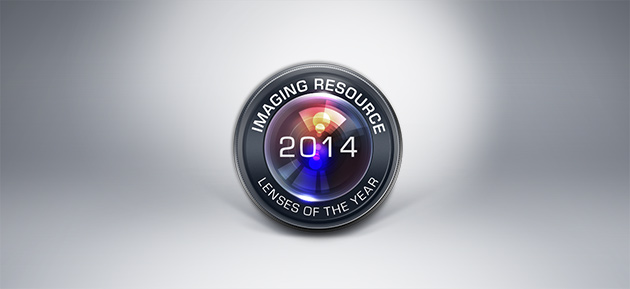
As we discussed in Part I of our Cameras and Lenses of the Year series, 2014 was an incredible year to be a photographer. Not only were the entry level camera options fantastic, but the glass released in 2014 was nothing short of incredible. In the prime arena, 2014 brought two of the sharpest primes ever created: The 55mm Zeiss Otus and Sigma 50mm f/1.4 Art. And besides the Otus and the Sigma, we loved the Fujifilm 56mm f/1.2 and the Panasonic Nocticron. Our choice was not easy.
Our choice on the zoom end was even more difficult, but we ultimately settled on two lenses on the opposite end of the price and focal length scale. Olympus released the second lens in their Pro line, the 40-150mm f/2.8. Given the downright astonishing (35mm equivalent) range of 80-300mm you'd expect major image quality tradeoffs, but the lens is as sharp as it is well built. On the other side of the focal length and price scale, Canon's 10-18mm lens was a bit of a dark horse candidate. It perhaps wasn't the flashiest performer, but we were won over by the incredible $299 price for an image-stabilized lens with great image quality. Curious to find out which lens won first place in each match-up? Read on!
Lens of the Year, Best Prime Lens: Sigma 50mm f/1.4 Art
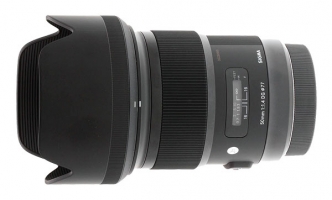
Sigma won Lens of the Year in 2013 for its amazing 18-35mm f/1.8 zoom, and this year repeats the feat with their 50mm f/1.4 DG HSM "A" (or "Art") lens. Another entry in their Global Vision series of lenses, this new 50 f/1.4 astonished us not only for its exceptional image quality, but for its price (it's currently widely available for $949). Before release, Sigma told us that they were confident in surpassing Canon and Nikon lenses in that focal length range, and instead saw the legendary Zeiss 55mm f/1.4 Otus as their true competitor.
In our testing, we found that the Sigma 50/1.4 Art (review) actually slightly surpassed the Otus for center sharpness wide open, although the Otus was noticeably sharper in the corners. The Sigma also showed near-zero distortion and somewhat lower vignetting. Of course, the Sigma has the added advantage of being autofocus-capable, while the Zeiss is manual-focus only.
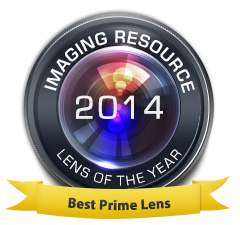
While the Zeiss boasts marginally better performance than the Sigma, we do take price/performance ratio into account in evaluating products for these awards. On that basis, the Sigma mops the floor with any and all competitors. You could buy four of the Sigmas and have money left over, for what one Zeiss would cost you. (Or, looked at another way, you could buy the Sigma and a $3,000 full-frame body to shoot it on, for the cost of the Zeiss alone.)
Sigma's been turning the lens world upside-down with their new Global Vision line of lenses, and their 50 f/1.4mm "Art" has done it again, in yet another category. Congrats to the lens engineers and designers at Sigma for another absolutely amazing optic.
Canon: Buy from Adorama | Buy from Amazon | Buy from B&H Photo
Nikon: Buy from Adorama | Buy from Amazon | Buy from B&H Photo
Lens of Distinction, Prime Lens: Panasonic 42.5mm f/1.2 Nocticron

Honestly, the Panasonic 42.5mm f/1.2 Nocticron (review) lens made us wish we could give out two top awards in this category; it's an absolutely spectacular optic, extremely sharp and almost dead-flat across the frame, even at its maximum f/1.2 aperture. Not only that, but it's also an autofocus lens with a very competent image stabilization system built-in. On a Micro Four Thirds cameras it's designed for (available from both Panasonic and Olympus), this is an 85mm equivalent focal length, pretty much the ideal focal length for a portrait lens. It's not cheap, but at current street prices of just under $1,400 (it had been on the order of $1,600 earlier in its life), it's not quite into the Zeiss-world stratosphere. Pair this lens with a top Micro Four Thirds body like the Panasonic GH4 or GX7, and you'll be blown away by the quality of the images you can capture. Big kudos to the lens-design team at Panasonic; the 42.5 f/1.2 set a new benchmark for optical quality for the Micro Four Thirds platform.
Buy from Adorama | Buy from Amazon | Buy from B&H Photo
Lens of Distinction, Prime Lens: Zeiss Otus 55mm f/1.4
While the Sigma edges it in center crispness wide open, distortion and vignetting, there's no denying that the Carl Zeiss Otus is a phenomenal optic, and in fact outperforms the Sigma in several aspects. The Otus line is intended to be Zeiss's premiere, high performance series of optics, of which this 55mm lens is the first. According to Zeiss, it was designed "without compromise," and is what Zeiss is calling "the absolute best lens in the world today."
This manual-focus optic is far from your average lens, not only in terms of price, but also in size and weight. At over two pounds of metal and glass, this stupendously large, all-metal, normal focal length prime lens is aimed squarely at professional photographers who demand the utmost in sharpness, resolution and contrast for portrait shooting. In our testing, the lens displays fantastic results. Supremely sharp images, on both full- and sub-frame cameras, even at f/1.4, with very low chromatic aberration and distortion, which we expected, given the hefty $4000 price tag. If price is no object, there's probably no finer generally-available camera lens in the world than the Carl Zeiss Otus 55mm f/1.4.
[Editor's note: Thanks to our reader Jay who astutely reminded us that this lens actually become available in late 2013, but since we were unable to test it in our lab until early 2014 we felt it deserved mention in this year's awards.]
Nikon: Buy from Adorama | Buy from Amazon | Buy from B&H Photo
Canon: Buy from Adorama | Buy from Amazon | Buy from B&H Photo
Lens of the Year, Best Zoom Lens:
Olympus 40-150mm f/2.8 Pro
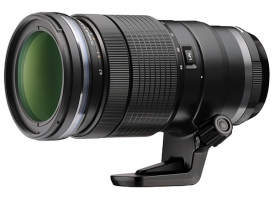
The 70-200mm f/2.8 lens has long been a mainstay of the 35mm-based market. The Micro Four Thirds world has had a good lens in that range for a little while now, in the form of the Panasonic 35-100mm f/2.8. Not content to let Panasonic have all the fun, Olympus considerably upped the ante with its 40-150mm f/2.8 Pro (review). Let us count the ways:
-
Not content with a mere 70-200mm equivalent, Olympus gave us an 80-300 equivalent lens!
-
The fast linear-motor AF drive means focusing is lightning fast for such a large lens.
-
Build quality is *superb*. This is a lens you'll love to use as much for how good it feels as the images it'll let you capture.
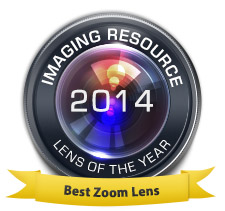
Best of all, the optical formula is incredibly advanced, consisting of 16 elements in 10 groups, with an aspherical element, an HD element and 5 ED elements. All that means the lens offers incredibly sharp images. We'd be surprised and pleased to find this kind of image quality in a 150mm f/2.8 prime lens for the Micro Four Thirds system; to find it in a 3.75x tele zoom lens is flat-out amazing. The complicated optical formula also allows for great close-focusing capability to a maximum 0.2x magnification on the sensor. All in all, a truly spectacular zoom for the Micro Four Thirds world.
Buy from Adorama | Buy from Amazon | Buy from B&H Photo
Lens of Distinction, Zoom Lens: Canon 10-18mm f/4.5-5.6 IS
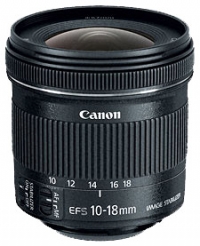
Canon APS-C shooters have long had an excellent option for an ultra-wide angle lens, in the form of the EF-S 10-22mm f/3.5-4.5 USM. The 10-22mm is a great, sharp lens, though a bit on the larger size and, until recently, rather expensive (MSRP used to be around $800, though now it's dropped some). However, this year, Canon introduced one of the best "bang for your buck" lenses currently on the market, with the EF-S 10-18mm f/4.5-5.6 IS STM lens (review).
Priced at a mere $299 brand-new, the Canon 10-18mm is not only very affordable, but also very sharp, lighter in weight, and includes both image stabilization and fast, quiet STM focusing. It's an excellent choice for users of Canon's smaller Rebel and SL1 DSLRs, not to mention the rest of their APS-C cameras as well. While its aperture range isn't as bright as the 10-22, nor its zoom range as long, for $299, the 10-18mm is absolutely a steal for a high quality, ultra-wide angle lens.
Buy from Adorama | Buy from Amazon | Buy from B&H Photo
Imaging Resource Cameras and Lenses of the Year Awards
This is only the second installment in our multi-part Cameras and Lenses of the Year Awards for 2014. We launched the Best Entry Level Cameras of 2014 earlier today, and our choices for the best compact cameras of 2014 will land on the 26th. Look for the best Professional and Enthusiast cameras of 2014 and our overall choice for the Camera of the Year next week.
Best Entry-Level Cameras of 2014
Best Lenses of 2014 (this page)
Best Professional & Enthusiast Cameras of 2014
Camera of the Year, 2014 (and Special Awards) coming soon
